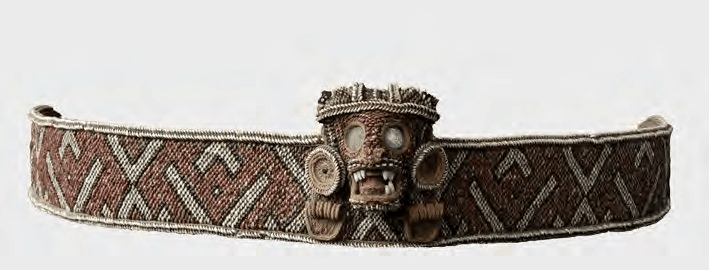Cahokia: Ancient America’s Great City on the Mississippi by Timothy R. Pauketat serves as an adequate introduction to the precolonial metropolis known today as Cahokia. A site we hope to one day visit, Pauketat's book analyzes the history and, to a certain extent, the history of the archaeologists who have worked at the site. With its impressive mounds, or pyramids, (including one of the largest in the Americas) and evidence of complex rituals, social stratification or ranks, long-distance trade and contacts and its legacy in the Mississippian cultures, Cahokia was an impressive civilization. Lamentably, as one might expect, the site has not been respected by 19th and 20th century Euroamericans, whose plows, construction, highways, and subdivisions have destroyed parts of Cahokia and related sites at St. Louis and East St. Louis.
Nonetheless, the impressive remains that have been salvaged and continue to be an area of study for archaeologists have shown the rise of a city or urban complex at Cahokia beginning around the year 1050. Pauketat proposes a connection with the supernova visible in the sky in the year 1054, an astronomical observation that must have been noticed by indigenous peoples like those who built Cahokia. After all, their Woodhenge was also associated with astronomical alignments and significance related to the cosmos. The supernova and the chronology we have for Cahokia's rise and fall, built on what used to be a smaller village site, suggest its influence spread far and wide in the Plains, Midwest, and South. While not unique for the construction of mounds, the scale of Cahokia's mounds, the large numbers of sacrificial victims found at the site, and vastness with villages peopled by inhabitants from distant areas suggest at least some degree of political centralization. The labor costs for the mounds, plaza, and the food and supplies to feed the area at its zenith, which was at least 10,000 in the urban area, must have also been an additional area the city's elites expressed their power. Religion, the human sacrifices at the mounds, and perhaps Cahokian traders, colonists, and chunkey games seem to have played a prominent role here, too, helping to establish Cahokia's influence across a huge swath of the North American continent and influencing subsequent indigenous cultures.
Ultimately, there is a lot we don't know about the site. The various oral traditions, legends, linguistic data, and finds from other sites in North America are all utilized in this source to construct a possible/plausible history of Cahokia. Was it a powerful kingdom perhaps influenced by Mesoamerica? No irrefutable evidence has been found yet, but common references and symbolism in Native American cultures either descended from Cahokia or influenced by it with Mesoamerican traditions are suggestive. If Cahokia was the center from which Mesoamerican influences may have spread further in North America, then perhaps people from Cahokia really did travel to Mexico in the 11th century (or Mesoamericans traveled north?). Further evidence is required to verify, but this idea of Mesoamerican influences brought to mind the past scholarship on the Taino and possible contacts with Mesoamerica in the precolonial period. The indigenous peoples of the Greater Antilles, for instance, had some overlap with Mesoamerican art and religious practices according to Puerto Rican scholars and theorists such as Eugenio Fernandez Mendez. Perhaps there was some sort of "moment" around the 11th century or so that witnessed direct or indirect relations between Mesoamerica and the Caribbean as well as Mesoamerican and what is now the United States?

No comments:
Post a Comment